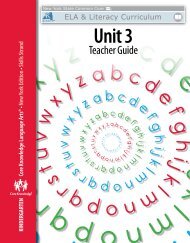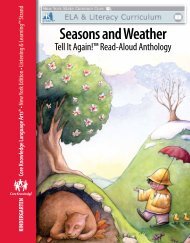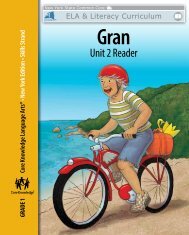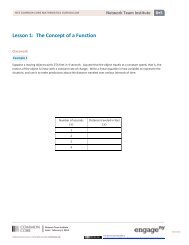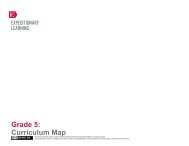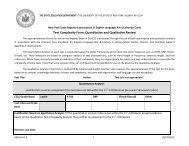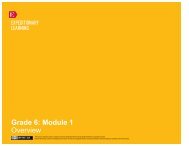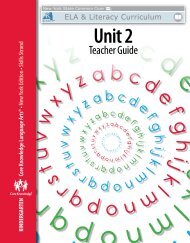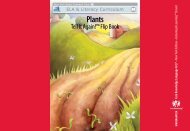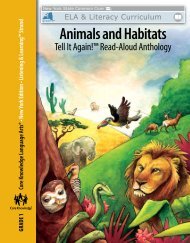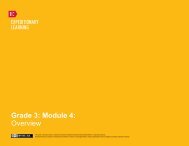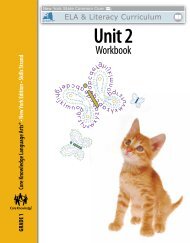Skills Unit 2 Teacher Guide - EngageNY
Skills Unit 2 Teacher Guide - EngageNY
Skills Unit 2 Teacher Guide - EngageNY
You also want an ePaper? Increase the reach of your titles
YUMPU automatically turns print PDFs into web optimized ePapers that Google loves.
Lesson 2<br />
Basic Code Review<br />
Tricky Words<br />
Reading<br />
Objectives<br />
The following language arts objectives are addressed in this lesson. Objectives aligning with the Common Core<br />
State Standards are noted with the corresponding standard in parentheses. Refer to the Alignment Chart for<br />
additional standards addressed in all lessons in this unit.<br />
Use an apostrophe to form contractions and<br />
frequently occurring possessives (L.2.2c)<br />
Use both regular and irregular past-,<br />
present-, and future-tense verbs orally and in<br />
own writing (L.2.1d)<br />
Use adjectives appropriately orally and in<br />
own writing (L.2.1e)<br />
Use knowledge of the letter-sound<br />
correspondences that have been taught to<br />
distinguish and correctly read long and short<br />
vowels in one-syllable words: ‘o_e’ > /oe/;<br />
‘u_e’ > /ue/ (RF.2.3a)<br />
Consult the Individual Code Chart and<br />
simple dictionaries to check spelling (L.2.2e)<br />
Decode two-syllable words with any<br />
combination of the following syllable types:<br />
closed syllable; magic –e syllables; vowel<br />
digraph syllables; r–controlled syllable;<br />
open syllables; and consonant –LE syllables<br />
(RF.2.3c)<br />
Read the following Tricky Words: my, by, have<br />
(RF.2.3f)<br />
Describe the following story elements:<br />
characters, setting, and plot, including how<br />
the beginning introduces the story and the<br />
ending concludes the action (RL.2.5)<br />
Use information gained from the illustrations<br />
and words in a text read independently to<br />
demonstrate understanding of its characters,<br />
setting, or plot (RL.2.7)<br />
Recount fables and folktales read<br />
independently, identifying specific features<br />
of the genre represented in the story, as<br />
well as the central message, lesson, or moral<br />
(RL.2.2)<br />
Ask and answer questions (e.g., who, what,<br />
where, when, why, how), orally or in writing,<br />
requiring literal recall and understanding of<br />
the details and/or facts of a fiction text read<br />
independently (RL.2.1)<br />
Describe how characters in a fiction text that<br />
has been read independently respond to<br />
major events and challenges (RL.2.3)<br />
Read and understand decodable text of<br />
appropriate complexity for Grades 2–3 that<br />
incorporates the specific code knowledge<br />
taught (RL.2.10)<br />
26 <strong>Unit</strong> 2 | Lesson 2<br />
© 2013 Core Knowledge Foundation



